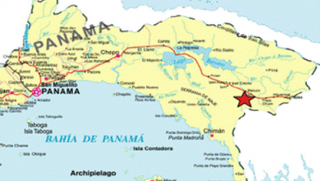Cañaza, Panama
![]()
![]()
![]()
![]()
![]()
![]()
![]() Click on Programs to learn more about their work in this community
Click on Programs to learn more about their work in this community
General Information

| Population* | 2000 |
| Number of homes | 384 |
| Number and % of children | 62 < 12 years 16% |
| Electricity | Yes |
| Corregimiento | Torti |
| District | Chepo |
| Corresponding Health Center | Centro de Salud in Torti |
| Distance from compounds | 10 minutes |
* Population does not reflect how many patients will be seen on medical
brigades as many people from surrounding communities come seeking
Medical Brigades medical attention.
Top Needs Expressed
The top needs expressed by the key community members are health, improvements to the school, and increased security due to lack of authorities.
The community of Cañaza has one combined primary and middle school (k-9) located in the center of the community. There are 88 students at the school with 4 teachers. The school has 4 classrooms, a cafeteria, and computer lab. School lunch is provided. For further education students go to the larger town of Torti, about 10 minutes away by bus.
Cañaza has a gravity based aqueduct water system. There is a water committee of 6 led by Father Pablo Kasobosque meets twice per year and maintains the system. The water system was constructed in 1982. Water comes to the community everyday with average pressure. The water is cholorinated every 3 months, but other methods are also used in the homes such as boiling, chlorinating, and some have water filters. 100% of the community is connected to the water system with a 90% pay rate of of monthly fee.
Cañaza does not have a health center so most community members must travel to Torti for their medical and dental needs. The top illnesses in the community are colds and water borne illnesses. There is no health comittee or any type of health workers in the community. Only 10% of the community has flush toilets, the rest have pit latrines. All community members have gas stoves and cement floors but less that one percent have water filters.
The homes in Cañaza are made of cement, zinc, and wood. Cañaza is mostly a farming community, with other members earning a living with cattle ranching and some members of the community are employed by private teak tree farms. Farmers produce mostly beans, corn, plantains, yucca, squash, and guandu or pigeon pea. For their financial needs, community members must travel to Torti. There is no access to a cooperative or credit within the community. Small businesses in the community include small stores, restaurants and a wood working shop.
Cañaza's school has not received any environmental education in the past few years. As in many Eastern Panama communities, the most common practice for waste management is to burn their trash. Currently the primary school has a vegetable garden project with one of Panama's largest banks, the Caja de Ahorros. There are no current reforestation projects in the community or active environmental committee.
For legal needs, community members are directed to the corregiduria or city hall of Torti. There are currently no lawyers or direct access to legal assistance in the community. The majority of the community's inhabitants hold land titles for their property.
There are no other organizations currently working in Cañaza.
Medical/Dental brigades currently work in the community. Public Health brigades will enter in early 2014.
Source of Information: Key informants interview November 15, 2013
Last Updated: May 6, 2016